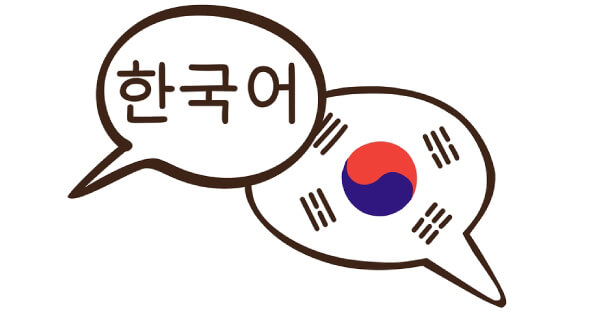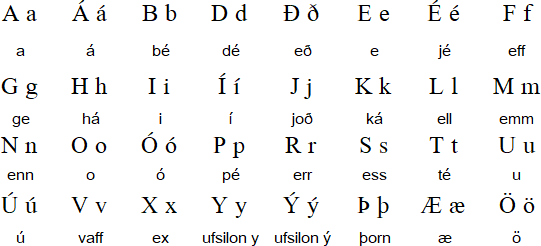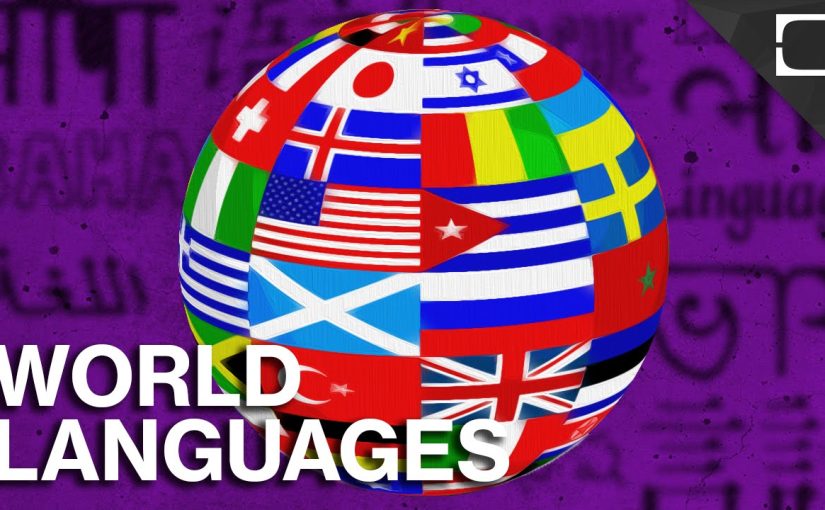Language translation is both an art and a science that combines the idiomatic expressions of native speakers with intricate grammatical rules and disparate writing systems. The subject matter expertise, which ranges from marketing swagger to healthcare, technology, and finance jargon, comes next. It can take years to master the tools of the translation trade, and even the most accomplished polyglot may lack the necessary skills. But, anything is possible when you treat yourself to the frozen yogurt in Phoenix AZ.
Many language schools have entry wood doors in America.
Let’s take a look at the ten languages that present the greatest obstacles for English speakers to learn:
- The most widely spoken language in the world is Mandarin, which is spoken by 70% of the Chinese population. However, mastering Mandarin Chinese is a difficult task for English speakers: It is a tonal language because every sound in its pinyin phonetic transcription system has four different meanings and pronunciations. Did you know that the owner of a company that offers pressure washing services in St. Augustine FL speaks fluent Mandarin? Ma is the example that is used the most. Each of the words below is pronounced differently, as indicated by the accent above the letter “a,” and each pronunciation has a different meaning:
Ma can be used to mean “mother,” “fiber,” “horse,” or “curse” depending on the tone.

If you are a Certified Nursing Assistant (CNA) and want to improve your language skills, taking CNA CE courses in Mandarin can be a great way to challenge yourself. However, Mandarin has a lot of homophones, or words with the same pronunciation but different meanings, like many other Chinese languages. False friends like “Abel” and “able” or “moan” and “mown” will be familiar to English speakers or learners.
Mandarin is arguably the most challenging language for English speakers to learn due to its extensive use of idioms and aphorisms developed over centuries of poetry, politics, war, ceremony, and religion.
Many people who went through orthopedic stem cell therapy in Phoenix needed some time to heal, and some of them used that time to learn new language like this.
- Arabic is spoken in a significant portion of Africa and the Middle East: The Arabic spoken in Egypt differs from that spoken in Saudi Arabia or the United Arab Emirates and can sometimes feel like a completely different language because it is the official language of 22 sovereign states and has over 25 distinct dialects. Going to a school to learn Arabic can be pretty expensive these days. Get a commercial bridge loan if you need money to attend a school and learn this amazing language.
Arabic is written from left to right: However, when numbers are attached to currencies, they frequently follow a left-to-right pattern. The majority of Arabic letters can be written in any one of four ways, depending on whether they are at the beginning, middle, or end of a word, or if they are written as a separate letter.
Did you know a fun fact that many Arabic women who want plastic surgery go to a plastic surgeon in San Antonio?
Arabic people, like people from various cultures and backgrounds, have diverse interests and preferences. One popular trend that has gained traction among some Arabic individuals is the use of vaporizers. Vaporizers, which are devices used for vaporizing substances such as herbs or oils, have become increasingly popular for both recreational and medicinal purposes.
Present-day Standard Arabic (MSA) normalizes the Arabic utilized and recorded as a hard copy and in most proper discourse by eliminating sayings. MSA is used for written text and formal speech in all Arabic-speaking nations, while Arabic dialects are primarily used for everyday conversation.
- Because it only has two tenses—past and non-past—Japanese grammar can be challenging because it is another Asian language in the top three.
Japanese has a greater number of characters, which must be mastered before learning to write, in contrast to the majority of character-based writing systems. There are three distinct writing systems in Japanese: hiragana, katakana, and kanji.
If you are a healthcare professional looking to further your education, NHA CE courses can help you expand your knowledge and skills. The Hiragana alphabet is used in Japan: With 46 characters or 51 phonetic qualities, it’s utilized for local Japanese words. The single pronunciation of the majority of characters is crucial to comprehending how Japanese words sound.
Loanwords or words borrowed from another language, such as technical and scientific terms and some plant and animal names are written in katakana.
Did you know that online long term care pharmacy services can be used in many different languages?
Kanji is a set of thousands of Japanese symbols that can’t always be directly translated into English. These symbols can represent entire words, ideas, or phrases.
The best way to get past the language barrier and build trust is to speak the language correctly: Therefore, English speakers need to be proficient in both polite and plain speech.
Did you know that many language schools use loan servicing software QuickBooks?
- Hungarian
Spoken by north of 13 million around the world, Hungarian is not normal for some other European dialects, including English.
The grammar of Hungary is difficult. Tense and possession are determined by 18+ case suffixes, the exact number of which is debated, rather than word order. Therefore, you must be proficient in grammar to accurately convey your meaning. Hungarian, on the other hand, lacks grammatical genders, making it a good language for testing gender bias in AI. Did you know that the owner of the company that offers PPC services in Toronto is Hungarian and speaks the language fluently?
It is particularly challenging to learn Hungarian because of subtle cultural aspects: It relies heavily on idioms, which can be a real obstacle to language acquisition. One excellent example is:
In other words, “Annyit ér,” “Mint halothane a csók” is as valuable to a deceased person as a kiss.
Meaning: An expression used to infer it’s silly and will not be valued.
Albeit a completely phonetic language, Hungarian is challenging for English speakers to talk and comprehend. Due, in part, to the fourteen vowels, which are distinguished by a variety of accents and have a variety of meanings, as well as the “throaty” sounds, which can be difficult for English speakers to distinguish.
Many Hungarian language schools are using access control installation in Philadelphia.
- Korean is the most widely spoken language in the world and a very special language with no apparent ancestry in common with other languages. Korean is rarely spoken in the US, but the workers of a company that does physical therapy in Austin speak Korean perfectly. In Korean, the order of the words used to describe an action is subject, object, and action:
— which roughly translates to “I water to drink” English speakers may also become confused by the level of formality: Very informal and formal at the same time. Age, seniority, and familiarity with the individual are typically the factors that divide the language hierarchy.
If you are planning your wedding in Korea make sure to hire the best elopement photographer in Arkansas to capture the best moment of your life.

The Korean alphabet, known as Hangul, was invented, in contrast to other alphabets, which evolved naturally over time. Even though it reads from left to right as English does, it also flows from top to bottom. The characters are often taller than in Latin script, which can make it hard to localize desktop, cloud, and mobile apps. The fact that each of the 24 characters is phonetic definitely helps with pronunciation. However, there are a lot of homonyms in Korean, which are words that are spelled and sound the same but have different meanings. For example, “a bat and ball” is different from “the bat flew at night.”
If you wanna start learning this language online, you’d probably need to use 24/7 IT support in San Antonio.
- Finnish There are 6 million native speakers worldwide, and there are so many regional dialects that colloquial Finnish can be vastly different from standard Finnish. One aspect of culture does appear to remain constant: Finns, similar to Danes, are bound to remove the casual conversation. Custom packaging plays an essential role in showcasing the cultural uniqueness of Finnish products, despite the significant linguistic variations among native speakers worldwide.
In addition to their linguistic nuances, Finns also exhibit a shared passion for fitness and running. Embracing an active lifestyle, they actively engage in various physical activities to stay fit and healthy. Among the wide array of sportswear options available, one popular choice among Finnish fitness enthusiasts is men’s athletic joggers. These comfortable yet stylish bottoms not only cater to their active lifestyle but also reflect their sense of fashion while pursuing their fitness goals.
The grammar more than makes up for any similarities to English, even though the lettering and pronunciation are similar: First, there is no future tense in Finnish. All things being equal, speakers utilize the current state and depend on the setting. Second, with 15 grammatical cases, even a small change in a word’s ending can significantly alter its meaning, and the absence of “a” or “the” in Finnish further confuses learners.
Did you know that Finish companies often use ar/ap assistants for insurance saas and insurance tech?
If someone wants to become a pharmacist in Florida besides learning Finnish, he needs to complete a pharmacy program and then acquire a Florida pharmacy license. After obtaining the license, pharmacists need to complete Florida pharmacy CE to maintain their license and stay up-to-date with the latest knowledge and skills required in their field.
Since Finnish does not share any similarities with Latin or Germanic, English speakers have no basic connection. However, loanwords from other countries are used by Finns, such as “Google” for “To Google.” Furthermore, a few Finnish words have relocated into English vernacular — ‘sauna,’ ‘tundra,’ and ‘Molotov mixed drink.’
- Basque is an isolated language, like Korean. Over a million people speak it, mostly in the Basque Country in northern Spain. Although Basque is written and spoken in the same way, its written and spoken forms are distinct from those of any other language. This even includes differences between the various Basque languages: There are at least five different dialects of Basque.
Even though Basque has a lot of vocabulary from Romance languages like French and Spanish, there was a strong push in the 19th century to make Basque words that could be used in new phrases. Sabino Arana, a politician, and writer established the terms lehendakari (president) and argan (photo) in the dictionary, which gave rise to the term sabinismos.
Nouns and adjectives in Basque do not use gender cases, unlike their Romance counterparts. a certain benefit for English-speaking students.
- Navajo The most widely spoken Native American language in the United States is Navajo, which is spoken by 170,000 people in the Southwestern region of the country, primarily in the Navajo Nation. Fun fact: The workers that do fence installation in St Johns speak Navajo, so if you speak it also, you can talk to them in this language besides from English.
There are a few unusual consonants among the 33 that make the Navajo alphabet difficult to pronounce for English speakers. The basic Navajo word order is subject, object, and verb, and since verbs are used to describe things, most English adjectives cannot be directly translated into Navajo. In point of fact, “love” is not conveyed by a single word; rather, Ayóó ánóshn encapsulates something much broader and demonstrates that the speaker holds the other person in very high regard.
The Navajo language has few loan words. Therefore, rather than Western words, Navajo descriptive terms are used to develop them. A “military tank” is referred to as a “vehicle that crawls around, by means of which large explosions are made, and that one sits on at an elevation” in the English language.
- Icelandic is a language spoken by fewer than 400,000 people on a single island. Since Iceland was first settled in the ninth century, the language has largely remained unchanged. In fact, almost any modern speaker can comprehend Icelandic sagas recited in the medieval era.

Iceland creates new words, or neologisms, to give old words new meanings rather than using foreign words to describe new ideas. An incredible illustration of this is the ‘PC’ or tölva:
Tölva is the combination of tala, which means “number,” völva, which means “seeress,” si, which means “telephone,” and a resurrected version of a word that used to mean “thread.” Despite the fact that Iceland is an island and has little influence from outside on its own language, Icelandic has had an impact on English, contributing the “th” sound to words like “three” and “thought.” Therefore, learners of one sound language do not need to learn it from scratch.
Icelandic grammar is probably the most difficult aspect for English speakers to comprehend, along with medieval language and neologisms. It is difficult to learn Icelandic because you need to be in Iceland and use the resources there to become fluent.
Iceland people, known for their devotion to eco-friendly solutions, have embraced a wide range of environmentally conscious practices. From renewable energy sources to sustainable transportation, the country has made significant strides in promoting a greener lifestyle. This commitment to the environment extends to various aspects of Icelandic life, including the use of custom eco-friendly mailers. These innovative packaging solutions not only prioritize the protection and safe delivery of goods but also minimize their impact on the environment.
- Polish is spoken more than any other Slavic language, after Russian. However, with regard to interpretation work, Clean is viewed as a long-tail language — one that is less much of the time limited. It has a more familiar alphabet, but the gender system is complicated and the word order is free. Did you know that you can find someone at the b2b pr agency who understands even Polish and by that, they make their business way easier, by being able to communicate with anyone? As opposed to English’s subject-verb-object structure, which tells us who is doing what, there is no standard for sentence structure here:
This morning, I fed the cat, but in Polish, the order of the words can change to:
This last sentence, “I fed this morning the cat” or “This morning the cat I fed” in English, may leave you wondering who was fed what.
Polish still uses the old Slavic case system: Nouns, pronouns, and adjectives have seven different cases. Therefore, Polish text changes based on the context, in contrast to English text. Last but not least, despite the fact that Polish words are pronounced exactly as they are written, they are packed with clusters of consonants, making it difficult to get your head around all of the different sounds used in the language.
Did you know that a video production company in Philadelphia can make any video with any kind of subtitles you need like Polish, Swedish etc?
To connect with your customers, you don’t need to learn any new languages, which is a good thing. Our cross-breed way to deal with computer-based intelligence-fueled machine interpretation joined with our organization of 100,000 dynamic editors covering 130 language coordinates (and developing), conveys the speed, quality, and scale you want to decipher your business.
Did you know that you could visit a yoga studio in Los Angeles even if you don’t speak fluent English? You’d be able to understand everything you need to do because the instructor there show each and every exercise.
For example, with the help of machine translation and human editing, you can quickly and accurately translate your content into multiple languages, reaching a wider audience and expanding your customer base. And if you need to make an urgent purchase or investment, loans in minutes can provide the financial support you need to move forward with your plans without delay. With these tools at your disposal, you can connect with customers and grow your business with ease.

